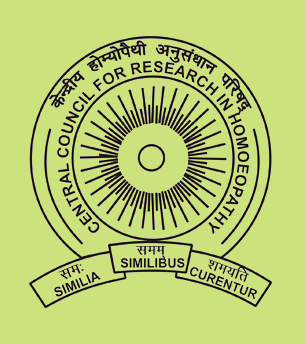Indian Journal of Research in Homoeopathy
Keywords
Double blind, Hydroquinone, Homoeopathic pathogenetic trial, Placebo control, Quantitative pathogenetic index, Qualitative pathogenetic index, Randomization, Vitiligo
Article Type
Original Article
Abstract
Background: A double-blind, randomized, placebo-controlled Homoeopathic Pathogenetic Trial (HPT/Drug Proving) of Hydroquinone was conducted, using the accepted guidelines, ethical approval and scientific documentation The potentization method was standardized. Toward enhancing the quality of HPT, the investigator proposed and evaluated the data using the Quantitative Pathogenetic Index and Qualitative Pathogenetic Index. Usable symptoms were derived from the study. The medicine was suggested for the treatment of vitiligo, based on its known toxicological effects. HPT of a new medicinal substance, using the established parameters, to evaluate symptoms in healthy volunteers was carried out using a controlled experiment. Aims: The aim of the study was to conduct a HPT using the accepted and scientific guidelines to derive clinically usable symptoms. Material and Methods: A double-blind, randomized, placebo-controlled homoeopathic pathogenetic trial was conducted in 22 volunteers (provers), out of whom 15 received Hydroquinone in 30C potency, thrice daily, for four weeks, while seven received the placebo. The volunteer′s symptoms during the initial seven days of the run-in period were carefully noted, and these were used as a filter, by elimination of the same symptoms in that volunteer during the verum phase. Thorough documentation such as Informed Consent Form, approval by the Ethics Committee, laboratory investigations, and safety and ethical measures, were taken care of. The volunteers were trained to write data in the prescribed diaries which was analyzed at the end. The investigator introduced Quantitative and Qualitative Pathogenetic Indices as parameters in the evaluation of the data derived from the HPT. Results: The HPT of Hydroquinone exhibited qualitatively distinct symptoms, which could be applied in clinical practice. Safe use was documented. An anecdotal study supported the proposed efficacy of Hydroquinone for the treatment of vitiligo and further exploration could be carried out. Conclusion: The HPT of Hydroquinone brought in qualitative symptoms. It was noted that a potentized preparation could produce many functional symptoms, but could not produce degenerative pathological symptoms such as vitiligo. The preparation could be used by the profession for vitiligo on the basis of its toxicological effects, supported by the anecdotal study. The Quantitative and Qualitative Pathogenetic Indices could further be used in future HPTs as a tool.
Digital Object Identifier
10.4103/0974-7168.116621
Publisher
Wolters Kluwer India Pvt. Ltd.
How to cite this article
Shah R. Hydroquinone: Homoeopathic Pathogenetic Trial. Indian J Res Homoeopathy 2013;7:47-61. doi: 10.4103/0974-7168.116621


